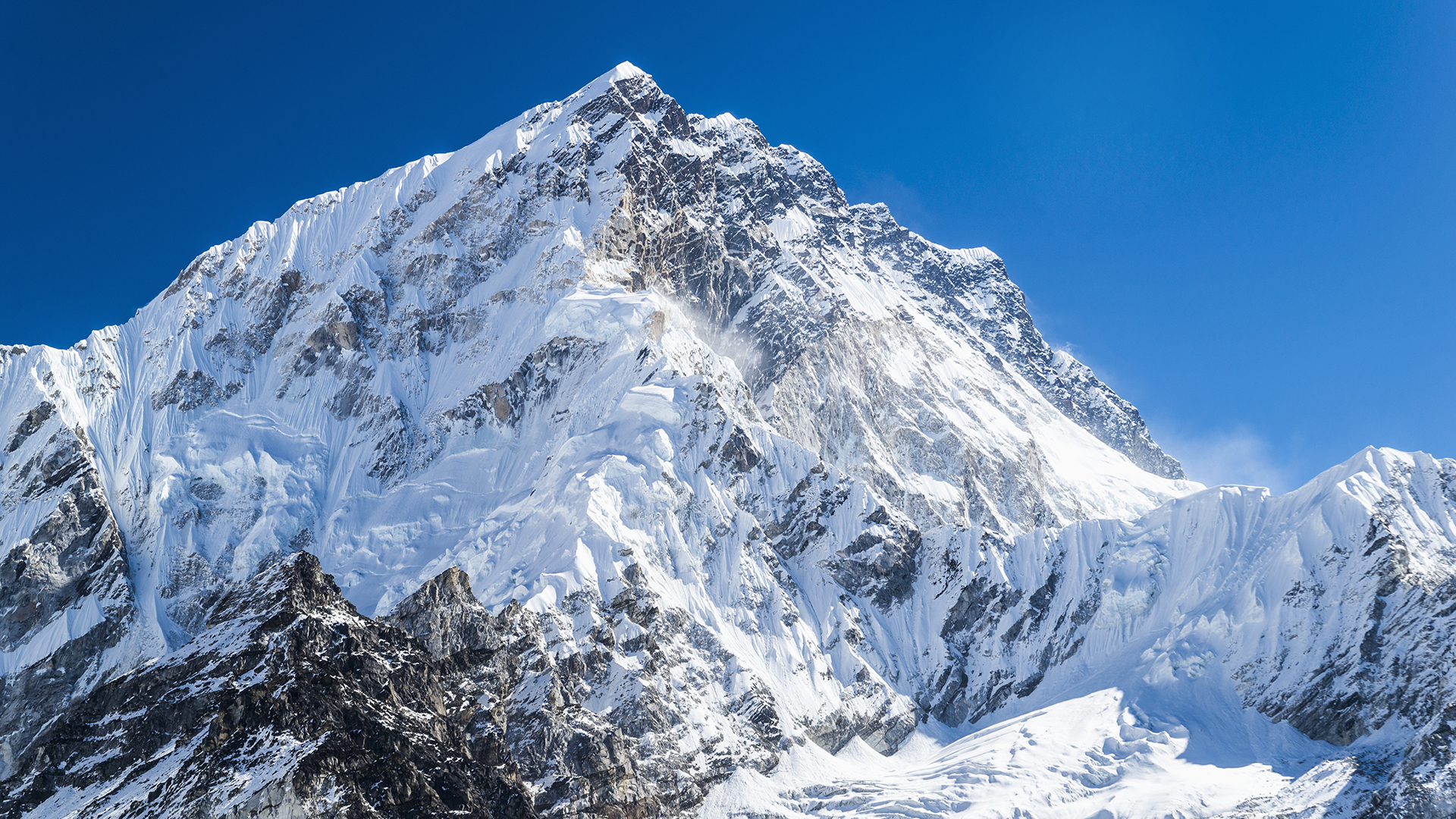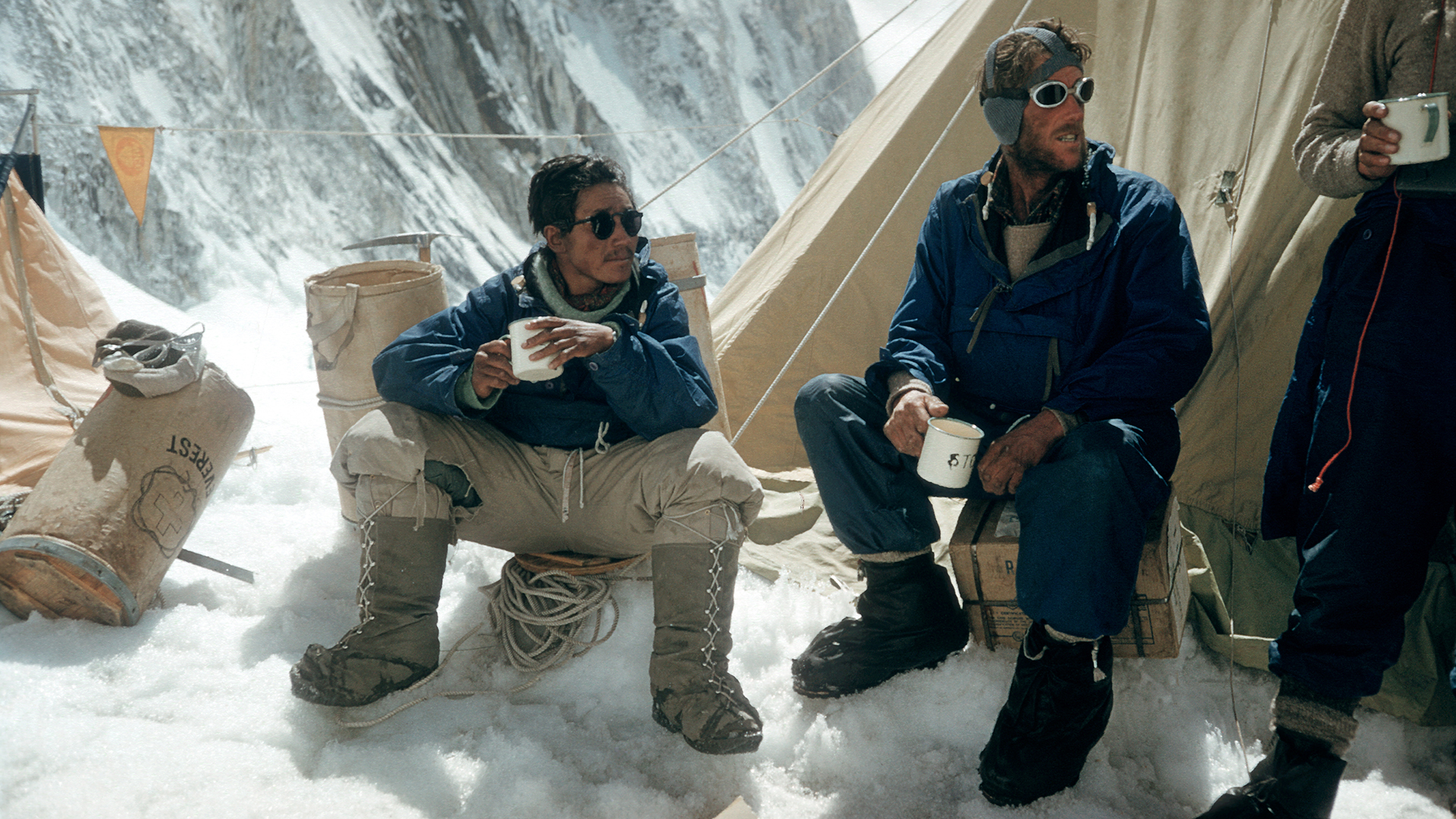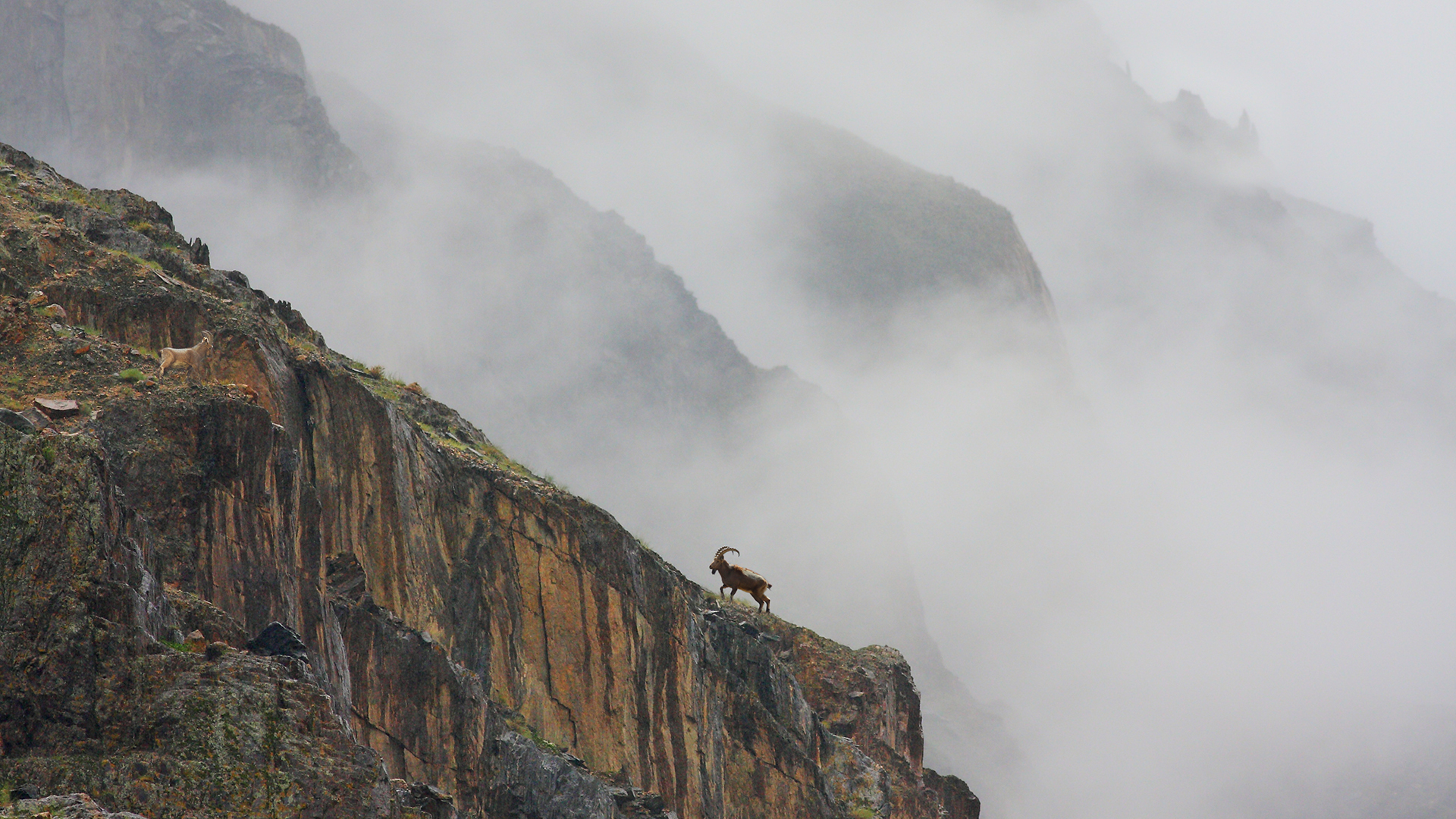Mount Everest: The deadly history of the world's highest peak
Mount Everest towers more than 29,000 feet above sea level.

Reaching 29,032 feet (8,849 meters) above sea level, Mount Everest is the highest mountain on Earth. Located in the Mahalangur Himal section of the Himalayas, the mountain's summit straddles the border separating Tibet and Nepal.
Who were the first explorers to climb Everest?
Mount Everest has two main climbing routes: the southeast ridge from Nepal, and the north ridge from Tibet. Though the north ridge route is shorter, today most climbers use the southeast ridge route, which is technically easier.
The northern approach was charted in 1921 by George Mallory during the British Reconnaissance Expedition, which was an exploratory expedition that was not intended to attempt the summit, according to UM. Mallory was famously, perhaps apocryphally, quoted as answering the question "Why do you want to climb Mount Everest?" with the reply, "Because it's there," according to The Ohio State University Department of History.
In 1922, Mallory and fellow Brits Geoffrey Bruce and Charles Granville Bruce, along with Austrian chemist George Finch, attempted an ascent for the first time using oxygen, but the expedition was thwarted by an avalanche, according to UM.
In June 1924, Mallory and English mountaineer Andrew Irvine attempted to reach the summit, but they did not survive. A 1999 expedition found Mallory's body. As the ice continues to melt due to climate change, more and more bodies have been recovered in recent years, Live Science previously reported.
Early expeditions in the 1920s and 1930s attempted to make the ascent from the Tibetan side, but access was closed after Tibet officially came under Chinese control in 1951. This spurred English explorer Bill Tilman and a small party that included Americans Charles Houston, Oscar Houston and Betsy Cowles to approach Everest through Nepal along the route that has developed into the standard approach to Everest from the south, researchers reported in 1992 in The Geographical Journal.
In 1952, members of a Swiss expedition led by Edouard Wyss-Dunant reached a height of about 28,199 feet (8,595 m) on the southeast ridge, setting a new climbing altitude record, according to the Swiss Foundations for Alpine Research. Tenzing Norgay, a member of this expedition and a Nepalese Sherpa, took part in the British expedition the following year.
Get the world’s most fascinating discoveries delivered straight to your inbox.
In 1953, a British expedition led by John Hunt returned to Nepal. Hunt selected two climbing pairs to attempt to reach the summit, Charles Wylie, a British Army lieutenant colonel and the organizing secretary to the expedition, wrote in The Himalayan Journal. The first pair — Tom Bourdillon and Charles Evans — came within 300 feet (91 m) of the summit but had to turn back due to oxygen problems. Two days later, the second pair — New Zealand mountaineer Edmund Hillary and Norgay — reached the summit, took some pictures and left some sweets and a cross, Wylie reported in 1954.
Today, the mountain is becoming both less difficult and more treacherous to climb. A 2022 study published in the journal NPJ Climate and Atmospheric Science showed that Everest's glaciers are melting rapidly due to climate change, making avalanches more frequent. The South Col Glacier — the world's highest — has thinned by more than 180 feet (55 m) over the past 25 years, Live Science reported. However, warmer temperatures and ice loss have made it easier for hikers to summit the mountain.
However, technology has made climbing safer, Arnette said. Supplemental oxygen is easier to obtain these days, and if you find yourself stranded, "at a minimum, they'll get a helicopter and fly you off."
When was Everest first measured?
The height of Mount Everest was first determined in 1856, according to the University of Montana Department of Geography (UM). At the time, the Great Trigonometric Survey of British India pegged the height of the mountain, known to them as Peak XV, at 29,002 feet (8,840 m). But those surveyors were at a disadvantage because Nepal would not grant them entry due to concerns that the country would be invaded or annexed, UM says. The current accepted elevation was determined by a joint Chinese-Nepalese survey in November 2021, though technically, Everest's height is in flux; the mountain is simultaneously growing from tectonic-plate activity, according to the U.S. Geological Survey and "shrinking" from sea level rise, Live Science previously reported.
In 1865, Andrew Waugh, the British Surveyor General of India, suggested that the mountain be named in honor of his predecessor in the job, Sir George Everest, according to a study published in 1931 in the journal Nature. The Tibetans had referred to the mountain as "Chomolungma," or Holy Mother, for centuries, but Waugh did not know this because Nepal and Tibet were closed to outsiders.
Mount Everest attracts experienced mountaineers and less-seasoned climbers from around the world, who typically enlist local guides from the Sherpa people, a Tibetan ethnic group renowned for their knowledge of the Himalayan range and skill in climbing, according to the American Himalayan Foundation. Climbing the more than 11,000 feet (3,350 m) from base camp to the summit in a low-oxygen environment is no easy feat. Altitude sickness, weather, wind and, in rare cases, altitude-induced psychosis are the major roadblocks to summiting the peak.
"It's like holding your breath and climbing a set of stairs," veteran climber and record keeper Alan Arnette told Live Science. "But not just any stairs — it's more like the Empire State Building." More than 6,000 people have summited Everest, and more than 300 have died trying, according to the Himalayan Database. Nearly 80% of those ascents have been accomplished since 2000. In 2018, a record 807 successful ascents were recorded, according to Arnette's records.
What lives on Everest?
Mount Everest is surrounded by a number of substantial peaks, including Lhotse (27,940 feet, or 8,516 m), Nuptse (25,791 feet, or 7,861 m) and Changtse (24,803 feet, or 7,560 m), according to Britannica.
Those higher altitudes cannot support animal life or vegetation. However, birch, juniper, blue pines, firs, bamboo and rhododendron grow in the lower areas of the mountain, per Britannica. The highest-altitude vascular plant species, a type of herb given the scientific name Saxifraga lychnitis, grows at 21,260 feet (6,480 m) on Everest's slopes and was described in a 2018 paper in the journal Alpine Botany. No known vascular plants grow above this point.
Musk deer, wild yak, red pandas, snow leopards and Himalayan black bears inhabit altitudes below 16,400 feet (5,000 m), according to Britannica. There are also small numbers of Himalayan tahrs, langur monkeys, hares, mountain foxes, martens and Himalayan wolves.
Everest milestones
Here are some other Mount Everest expedition milestones:
- 1895: Andrew Waugh, the British Surveyor General of India, suggests naming the tallest Himalayan peak after his predecessor, Sir George Everest.
- 1921: British explorer George Mallory charts the northern approach.
- May 29, 1953: Tenzing Norgay and Edmund Hillary become the first expedition to officially summit Everest.
- May 20, 1965: Sherpa Nawang Gombu becomes the first person to reach the summit twice, The Guardian reported in a 2011 obituary.
- May 16, 1975: Junko Tabei of Japan becomes the first woman to summit Everest, The New York Times reported that year.
- May 3, 1980: Japanese climber Yasuo Kato is the first non-Sherpa to reach the summit a second time, following his original 1973 summit. (Kato died in 1983 during another attempt to reach Everest's summit, according to a report in the American Alpine Journal.)
- Aug. 20, 1980: Reinhold Messner of Italy is the first person to reach the summit solo, a grueling experience that Messner recounted in a 2003 interview in The Guardian.
- 1996 climbing season: 16 people die while climbing Mount Everest, the most fatalities in a single year up to that point, according to the Indianapolis Public Library. Eight climbers died on May 10 alone, during a storm. One of the survivors, Jon Krakauer, a journalist on assignment for "Outside" magazine, wrote the bestseller "Into Thin Air" (Anchor Books, 1999) about his experience.
- May 22, 2010: Apa Sherpa, who first summited on May 10, 1990, reaches the summit a 20th time, Everest News reported.
- May 23, 2013: At age 80, Japanese climber Minura Yūichirō becomes the oldest person to summit, according to CNN.
- April 25, 2015: The Gorkha earthquake in Nepal triggers an avalanche on Everest, killing 22, the single deadliest day in the mountain's recorded history, Stanford University's Stanford Earth Matters magazine reported.
Additional resources
Explore Mount Everest from the safety and comfort of your home, using this interactive 3D map. Read a harrowing account of two climbers — Reinhold Messner and Peter Habeler — who in 1978 attempted to summit Everest without supplemental oxygen, at PBS' NOVA Online. View highlights from the exhibit "Everest: Ascent to Glory," produced by the Bowers Museum in Santa Ana, California, in a virtual tour.
This article was originally written in 2012 by Live Science contributor Kim Ann Zimmermann, and has since been updated.

Joanna Thompson is a science journalist and runner based in New York. She holds a B.S. in Zoology and a B.A. in Creative Writing from North Carolina State University, as well as a Master's in Science Journalism from NYU's Science, Health and Environmental Reporting Program. Find more of her work in Scientific American, The Daily Beast, Atlas Obscura or Audubon Magazine.




